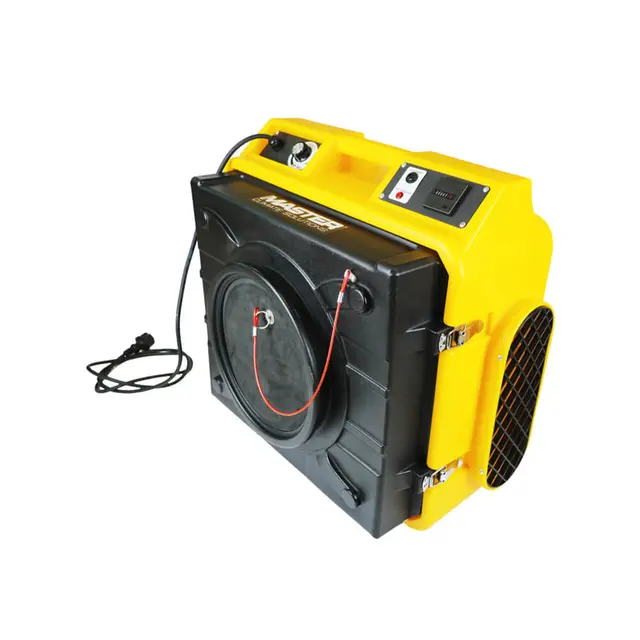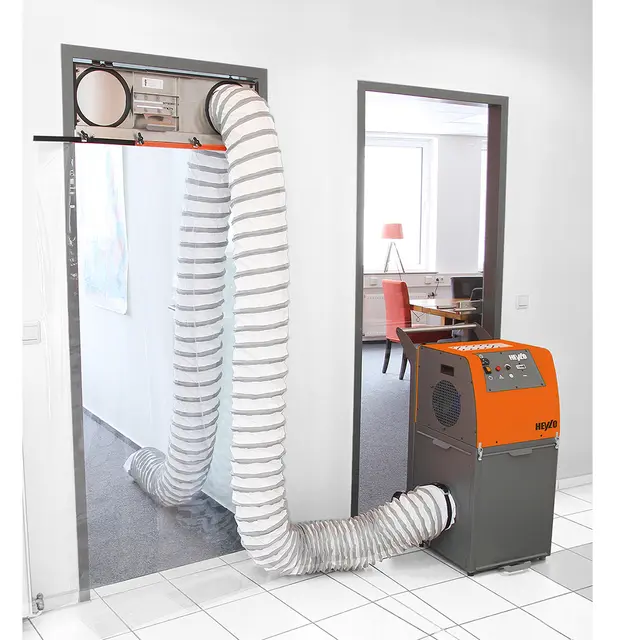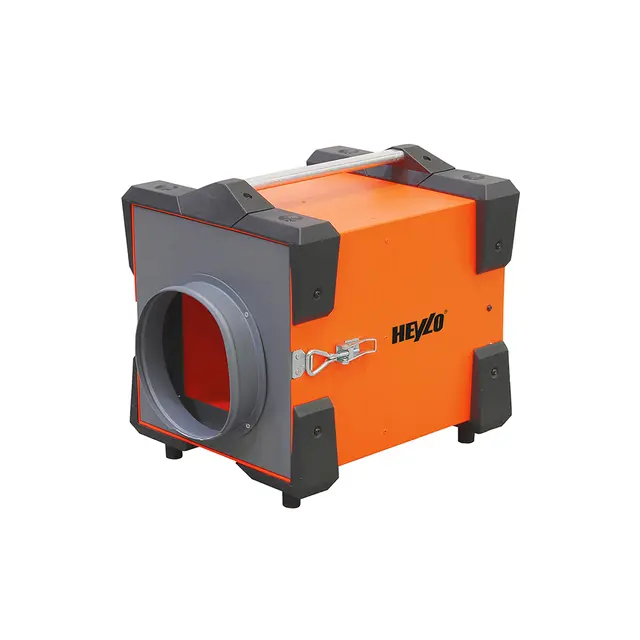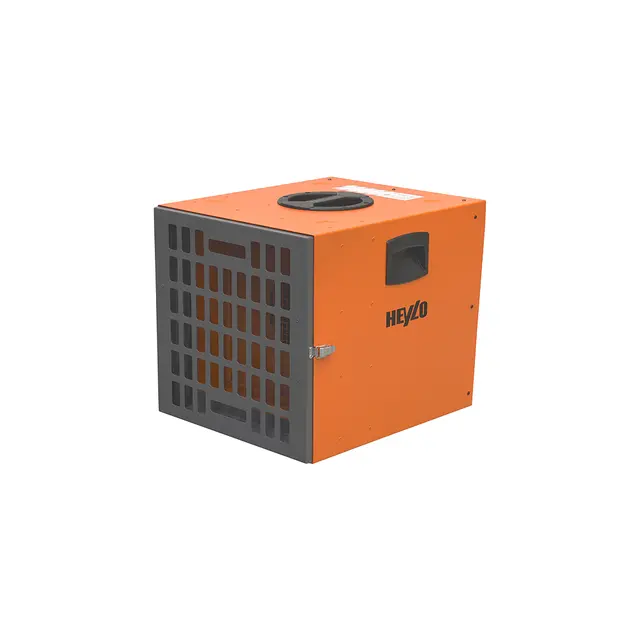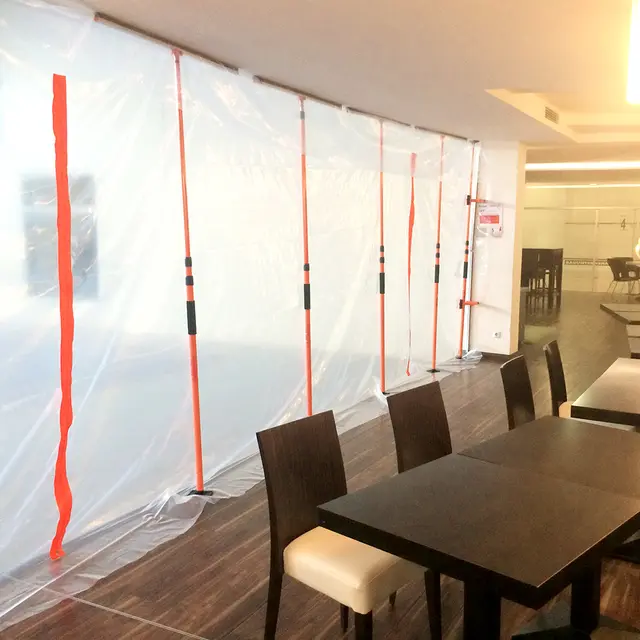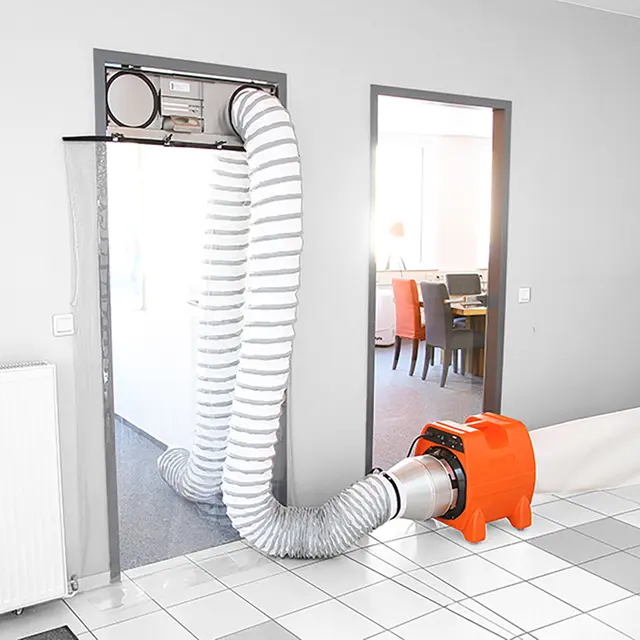How to get dust out of the air after construction work
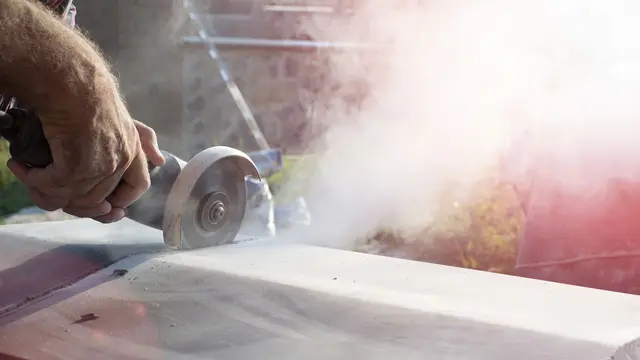
- Home
- Insights
- Air cleaning insights
- How to get dust out of the air after construction work
To guarantee the safety of those working on building sites and others living in the vicinity, discover how blowers, air scrubbers and air purifiers combine to deliver the best way to clean up dust after construction work.
During construction work and home renovations, there are many areas of risk that need to be accounted for. Minimising the dangers of equipment-related accidents. Protecting against falling debris and other objects. Preventing falls from heights and hazardous trips.
Dust escaping into the atmosphere fits neatly into this category. Dust is an unavoidable by-product of practically all construction projects and renovations, but that doesn’t mean it isn’t a significant hazard.
With the potential to agitate peoples’ allergies, cause respiratory difficulties and other unwanted consequences, it is vital builders understand how to get dust out of the air after construction work and have the equipment they need to control the amount of dust that is about to enter the atmosphere.
This article will address the best way to clean up dust after construction – the use of air purifiers, air scrubbers and blowers – and how to employ these effectively to greatly reduce the risks of excessive dust in the atmosphere.
The dangers of construction dust
Outside of the most painstakingly cleaned environments, dust is a common sight in most households and buildings. But, construction dust is typically more potent and dangerous in comparison. There are three main types of dust generated by construction sites and renovation works:
Silica dust: Produced by work on materials such as concrete, mortar and sandstone.
Wood dust: Produced by work on softwoods, hardwoods, MDF and plywood.
Lower toxicity dust: Produced by work on gypsum, limestone, dolomite and marble.
On top of these, the air might also contain remnants of volatile organic compounds (VOCs) from paints and adhesives, formaldehyde and airborne fibres.
Because many of the most dangerous dust particles produced throughout building works are virtually invisible to the naked eye (around 0.1 to 0.3 microns in diameter), it can be easy to overlook their presence. But, due to this, these particles are just as easy to digest and build up in the lungs.
In the short-term, this can cause people to suffer allergic reactions to these particles and short-term respiratory conditions. Prolonged exposure to these environments can eventually cause permanent damage to a person’s lungs and airways. Prominent dust-related diseases among construction workers include:
Lung cancer
Silicosis
Chronic obstructive pulmonary disease (COPD)
Asthma
It is estimated that silica is responsible for the deaths of 500 current or former construction workers every year, while 4,000 deaths are linked to the development of COPD through work.
This is why effective construction dust cleaning is critical both during and immediately after building works. It protects the health and wellbeing of both those working on-site and anyone who is still living on the premises while this work is ongoing.
Which makes it alarming that, in a survey conducted jointly by the Institution of Occupational Safety and Health (IOSH) and the Construction Dust Partnership (CDP) in the UK in 2014, over 44% of respondents believed that the industry as a whole paid little attention to the importance of construction dust removal.
In order to better protect people working and living in these environments from these serious health risks, it is crucial that blowers, air scrubbers and air purifiers for construction dust are widely employed to keep the air as clean and free of contaminants as possible.
Using air purifiers and scrubbers for construction dust
Air-cleaning machines such as air purifiers, air scrubbers and blowers are designed to draw in construction dust from the air surrounding these devices and remove them from the area, leaving only fresh, clean air in the area.
These units work by extracting air from the room and capturing any dust particles in special-purpose HEPA filters, which may need to be cleaned from time to time during application to make sure they don’t become clogged or overloaded. While the dirty, dust-filled air is being removed from the area, another blower will pump in fresh air from the outdoors, keeping the air as clean and healthy as possible.
What is a HEPA filter?
A true HEPA (High Efficiency Particulate Air) filter is a type of high-quality air filter that removes at least 99.97% of particles from the air that are at least 0.3 microns in size. These are used in air purifiers, vacuum cleaners and air ducts as these filters offer the best way to get rid of dust after building work and in environments where it’s critical for the air to remain clean.
In addition, these units will also remove any pollutants and overwhelming odours that are present in the air during construction work, such as the smells of paint, treated woods and various gases and fumes. By eliminating these odours, it makes the environment more comfortable for those working and living in it.
This approach makes air purifiers for construction dust extremely valuable during any form of construction project or renovation. Particularly in small, contained locations without a lot of in-built ventilation, these devices are critical in preventing those on-site from inhaling any dangerous particles that would otherwise be circulating in the atmosphere.
In addition, it is not just the immediate construction area that needs to be considered. If people are living or working in other areas of the building while the renovation is ongoing, it is possible for dust to travel through air ducts or other avenues and infiltrate those spaces.
That is why we would encourage the use of multiple air scrubbers or purifiers across the site for comprehensive construction dust clean up, primarily in areas where people will typically spend a long time (e.g. bedrooms, kitchens, offices).
Further tips for construction dust removal
Explore the potential of introducing air cleaners that can be attached to your furnace or air-conditioning unit - this may allow dust to be removed from several rooms at once
After any renovation work is done, open any available doors and windows to allow fresh air in and polluted air out of your house
Use fans/blowers to create a negative pressure in the renovation area – this will draw air from around the home or building into the construction site, rather than the other way around, reducing the risk of dust escaping into other areas
Avoid sweeping away standing dust with a brush or feather duster – this will just encourage dust into the atmosphere where it can cause greater harm
When checking for construction dust post-renovation, be sure to check commonly missed fixtures and fittings for any remnants (e.g. ceiling fans, light fixtures, decorative items, indoor accessories)
Applying these tips, alongside the effective use of Master’s range of air cleaning solutions, is the best way to clean up dust after construction and protect the health of everyone during and following a project.
How Dantherm Group’s machines remove dust from the air
To maximise your ability to eliminate dust from construction sites, look no further than our purpose-built air scrubbers and professional blowers.
The Air Scrubber MAS 13 significantly enhances the air quality wherever it is positioned, and greatly reduces the presence of undesirable odours. Easy to manoeuvre and operate with variable speed settings, this model both purifies the air and enhances the performance of nearby heaters and air conditioners.
Our robust and highly durable blowers are straightforward to transport and deliver a powerful flow of air into any environment. Plus, with the use of our 3.5m dust bags, they separate dust particles from the flow of air, ensuring it is of the utmost quality when pumped into the renovation site.
Discover the best way to clean up dust after construction work today – get in touch with our team for more information on our air cleaning equipment.
Related products
Featured insights

What to do when the atmosphere becomes a hazard

Improving air quality for the sake of public health
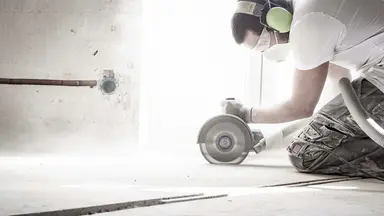
Creating healthy, clean air on construction sites.
Need help with choosing the right solution? Our team of over 100 climate control experts can assist.
You can also reach out or join the discussion on our Social Media. Check out our LinkedIn page.
